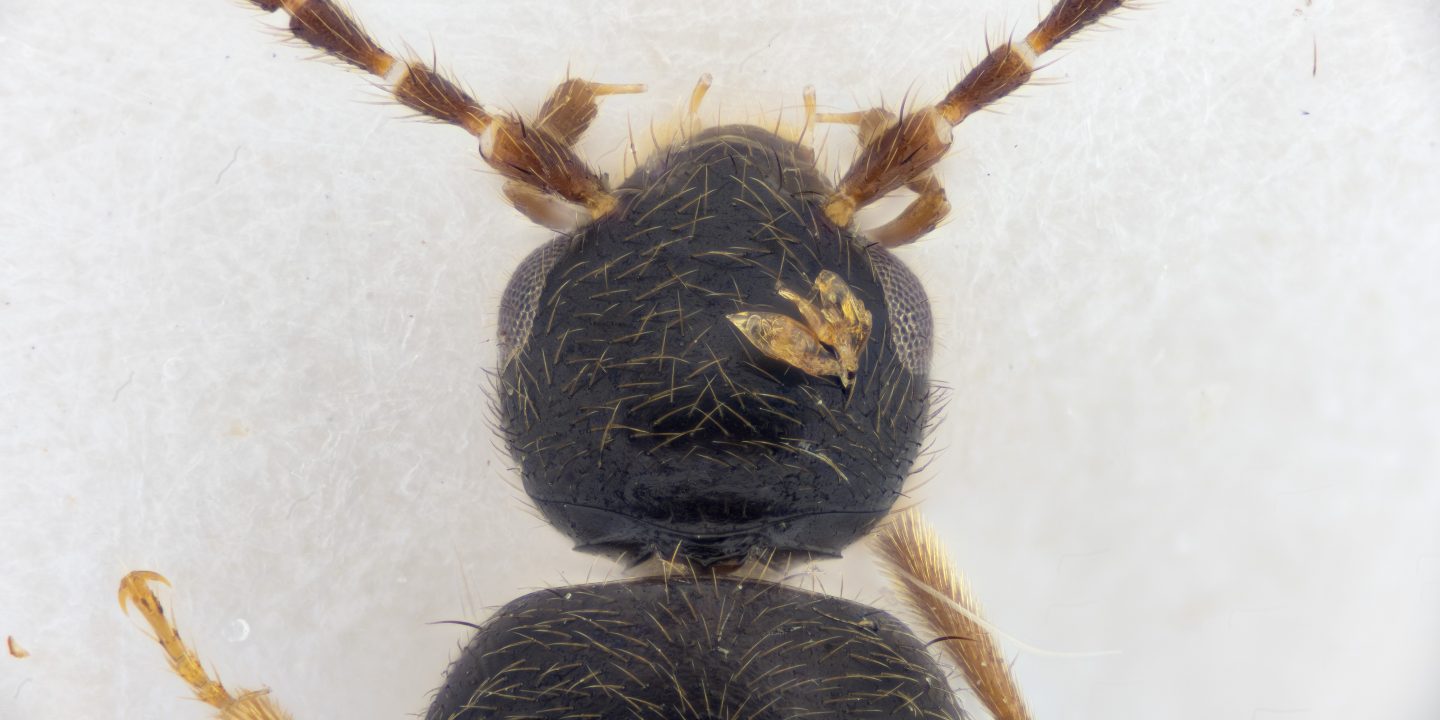Whenever you hear the word fungi, chances are high that you are thinking of the colourful variation of mushroom fruiting bodies popping up in high abundance during the fall. Or maybe you’re thinking of the vast webs of underground mycelia that most fungi produce. For some, the frightening Cordyceps fungi might be the first to come to mind, as made popular by the video game and tv-series “The Last of Us”. However, I’m willing to bet not many will first think of the Laboulbeniales.
This order of ectoparasitic fungi, as seen on the head of the beetle in the featured image of this post, is a group of understudied, microscopic obligate parasites that mostly parasitize insects. The Laboulbeniales (commonly referred to as beetle-hangers) are often said to be quite un-fungi-like, as they are very different from what you usually expect from fungi. Combined with the fact that you need knowledge about both fungi and insects to effectively study these organisms, it should come as no surprise that not much is known about the Norwegian funga of Laboulbeniales.
The iNoLa-project, as led by Dr. Vladimir Gusarov, seeks to do something about this, by taking inventory of the Norwegian Laboulbeniales with a particular focus on the Staphylinoidea as the targeted group of potential host species. In June I started my tenure as a technical assistant in this effort, with the goal of finding and recording as many new species to Norway as possible by scanning the pinned insect collections and newly collected material collected during summer.

After six months of thorough examination of the collections, we have so far found an estimated 50 new species to Norway. The infected specimens will be sent to expert collaborators at the University of Ghent for definite identification. Hopefully, as the project is coming closer to it’s end, the number of new species to Norway will increase further, and with the inclusion of further potential host groups in the future, the number can surpass 100 new species.
![]()

1 Comment on “Door 13: Discovering hidden microscopic diversity in Norway”